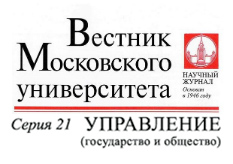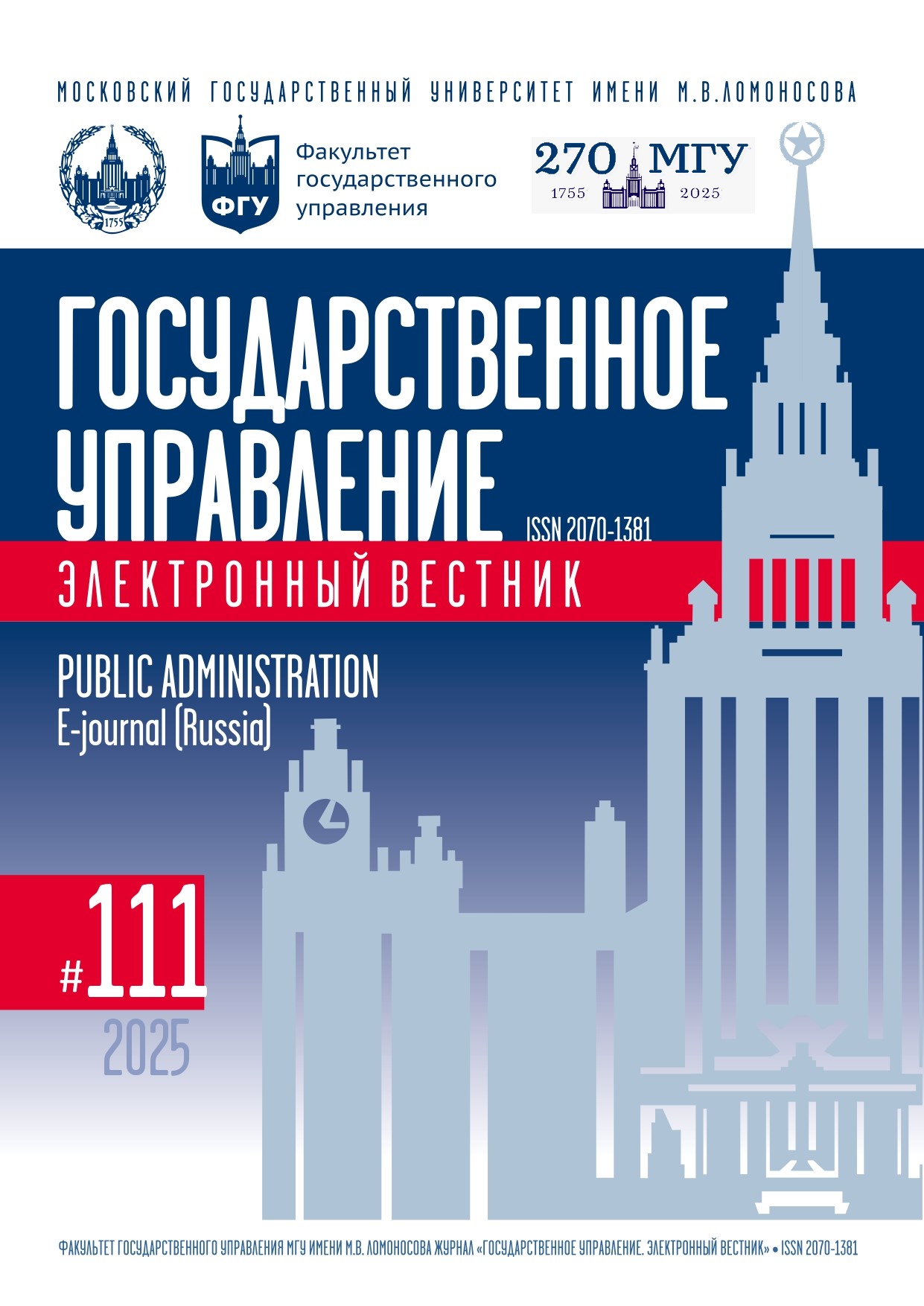Standard of Living and Demand for Sports
DOI:
https://doi.org/10.55959/MSU2070-1381-111-2025-%25pKeywords:
Expenses on sports services, population income, standard of living, paid services, demand for fitness, state financing of sports.Abstract
The article examines the reasons for the growth in demand for physical education, sports, fitness centers and sports clubs. The results of the analysis of statistical indicators of living standards, the state of the economy, budget expenditures and their dependence on each other are presented for the regions of the Volga Federal District. During the study, when calculating the correlation coefficients, it was revealed that there was no relationship between budget expenditures directly on physical education and sports and the growth in demand for paid services in the same area. A strong connection was found between the demand for paid services of physical education, sports, fitness centers and sports clubs with personal income of people, growth of gross regional product and the number of people involved in sports. The considered structure of the volume of paid services showed that citizens’ expenses on physical education and sports are not a priority. In the Volga Federal District, according to the results of 2024, their share amounted to 1.55%. It is concluded that when families satisfy their primary needs, a corresponding information campaign is needed from the state to orient citizens toward a healthy lifestyle and consumption of healthy services, the costs of which will return to the budget in the form of taxes from businesses. Accordingly, the creation of conditions that will allow family budgets to spend on sports is achievable with economic growth and development of regions that will improve the standard of living. The study also raises the question of possible state support for the fitness industry.
References
Аркалов Д.П. Клиентоцентричность как вектор экономики доверия // Государственное управление. Электронный вестник. 2024. № 106. С. 116–126. DOI: 10.55959/MSU2070-1381-106-2024-116-126
Аркалов Д.П., Ившин В.Г. Спорт как социально-политический институт // Спорт: экономика, право, управление. 2024. № 4. С. 17–20. DOI: 10.18572/2070-2175-2024-4-17-20
Аркалов Д.П., Литвин А.В. Оценка финансирования и спроса на физкультурно-спортивные услуги в России и Удмуртской Республике // Национальные интересы: приоритеты и безопасность. 2022. Т. 18. № 3(408). С. 446–463. DOI: 10.24891/ni.18.3.446
Аркалов Д.П., Пьянкова С.Г. Модель внутренней динамики внебюджетной деятельности государственных (муниципальных) спортивных учреждений // Экономический анализ: теория и практика. 2024. Т. 23. № 12(555). С. 2364–2377. DOI: 10.24891/ea.23.12.2364
Косников С.Н., Енокаева С.С., Гурьянов П.А., Биленькая О.Н. Роль физической активности в формировании человеческого капитала // Экономика и управление: проблемы, решения. 2024. Т. 3. № 12(153). С. 14–22. DOI: 10.36871/ek.up.p.r.2024.12.03.002
Макшанчиков К.Н. Расходы россиян на спорт: эконометрический анализ по данным опроса Левада-Центра // Прикладная эконометрика. 2020. № 4(60). С. 115–138. DOI: 10.22394/1993-7601-2020-60-115-138
Соломахина Т.Р., Скриплева Е.В. Экономическая эффективность вовлечения населения в массовый спорт // Вестник Курской государственной сельскохозяйственной академии. 2022. № 3. С. 194–198.
Хайруллина А.Д., Рендикова Р.Р. Анализ и перспективы развития российского рынка фитнес-индустрии // Наука и спорт: современные тенденции. 2022. Т. 10. № 2. С. 92–100. DOI: 10.36028/2308-8826-2022-10-2-92-100
Чернов А.Ю. Динамика расходов российской семьи в современных условиях // Экономика. Налоги. Право. 2022. Т. 15. № 1. С. 134–141. DOI: 10.26794/1999-849X-2022-15-1-134-141
Davis E.A., Knoester C. U.S. Public Opinion about the Personal Development and Social Capital Benefits of Sport: Analyzing Components of the Great Sport Myth // Journal of Sport and Social Issues. 2024. Vol. 48. Is. 5. DOI: 10.1177/01937235241293718
Paár D., Pogátsa Z., Ács P, Szentei A. The Relationship between Inequalities in Household Sports Consumption Expenditures and Income Level // International Journal of Environmental Research and Public Health. 2022. Vol. 19. Is. 23. DOI: 10.3390/ijerph192315608
Sánchez-Santos J.M., Rungo P., Lera-López F. Building Social Capital through Sport Engagement: Evidence for Adults Aged 50 Years and Older // Ageing and Society. 2022. Vol. 44. Is. 2. P. 403–428. DOI: 10.1017/S0144686X22000046
Thibaut E., Eakins J., Vos S., Scheerder J. The Determinants and Income Elasticities of Direct and Indirect Sports Expenditure Categories // European Sport Management Quarterly. 2017. Vol. 18. Is. 2. P. 175–192. DOI: 10.1080/16184742.2017.1341539
Thibaut E., Vos S., Scheerder J. Hurdles for Sports Consumption? The Determining Factors of Household Sports Expenditures // Sport Management Review. 2013. Vol. 17. Is. 4. P. 444–454. DOI: 10.1016/j.smr.2013.12.001
Weight E.A., Smith A.B., Rubin L.M. The Athlete Advantage: Human Capital Resource Emergence through Sport // Journal of Issues in Intercollegiate Athletics. 2022. Vol. 15. Is. 1. P. 442–458.
Downloads
Published
Similar Articles
- Svetlana G. Pyankova, Dmitriy P. Arkalov, Cost Management Methodology for Public Services and Infrastructure Maintenance , Public Administration. E-journal (Russia): No. 92 (2022)
- Valeriya E. Gavrilova, Population Health as a Nationally Significant Resource in the Context of Expensive Money , Public Administration. E-journal (Russia): No. 111 (2025)
- Igor N. Molchanov, Natalia P. Molchanova , Government Financial Regulation in a Period of Increasing Global Instability , Public Administration. E-journal (Russia): No. 85 (2021)
- Lyudmila I. Bushueva, Yulia F. Popova, Statistical Analysis of Financial Accessibility and Population Satisfaction with Activities of Financial Institutions , Public Administration. E-journal (Russia): No. 91 (2022)
- Timur O. Tarba, Instruments of Interaction between State Corporations and Subjects of the Russian Federation , Public Administration. E-journal (Russia): No. 109 (2025)
- Elena E. Shestakova, Social Policy for Human Development: World Experience , Public Administration. E-journal (Russia): No. 85 (2021)
- Valentina A. Kulakovskaya, Alexander Yu. Sanin, On the Issue of Economic Consequences of Environmental Management Conflicts in the Baltic Sea Coastal Zone , Public Administration. E-journal (Russia): No. 90 (2022)
- Nina A. Voskolovich, Features of Service Sector Transformation in New Economic Reality , Public Administration. E-journal (Russia): No. 99 (2023)
- Liubov N. Orlova, Yan Ming Jie, “Smart Specialization” Concept for Innovative Development of Russian Regions , Public Administration. E-journal (Russia): No. 102 (2024)
- Oleg S. Koshevoy, Logistic Regression Model for Predicting the Use of the Public Services Portal , Public Administration. E-journal (Russia): No. 86 (2021)
You may also start an advanced similarity search for this article.




